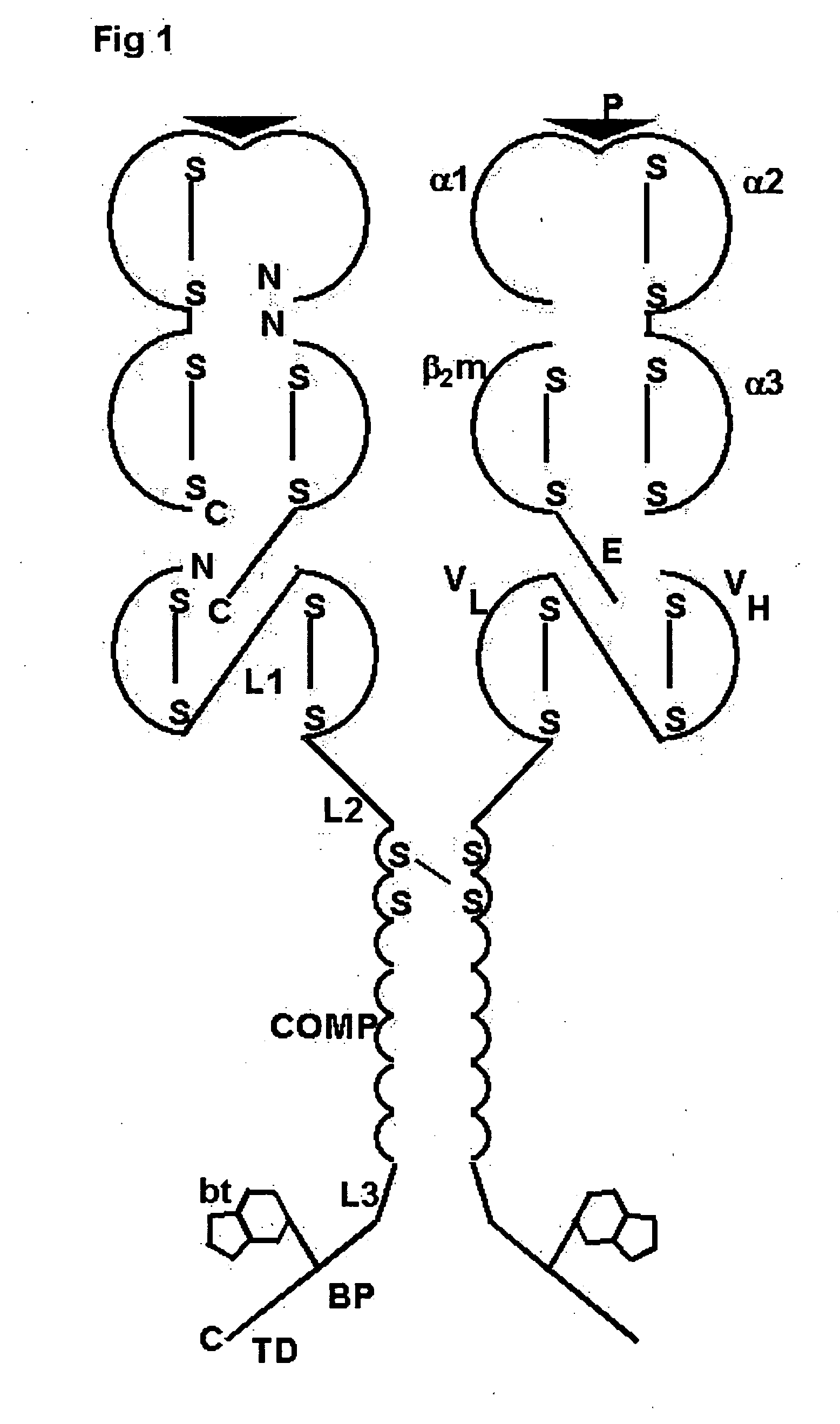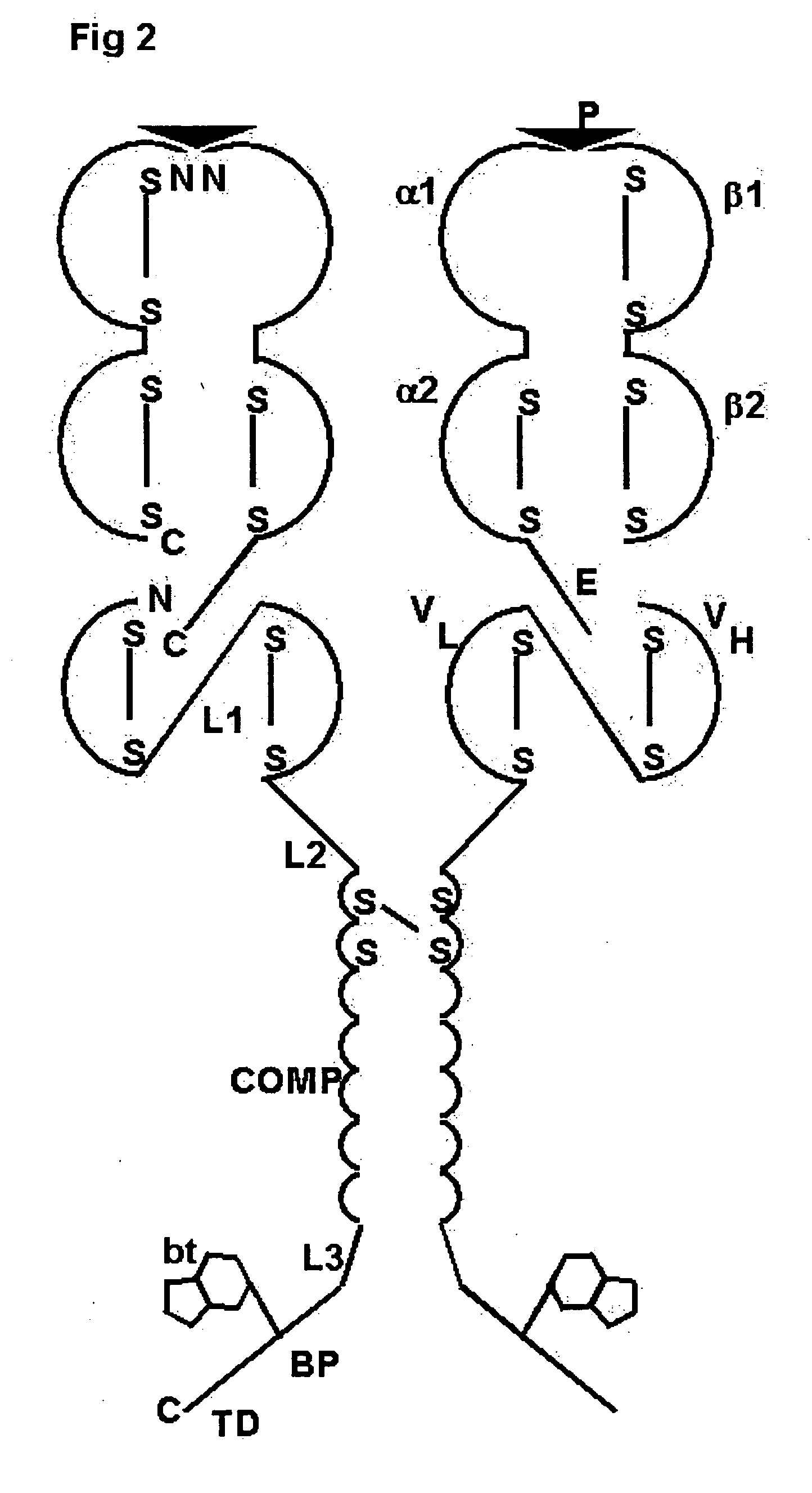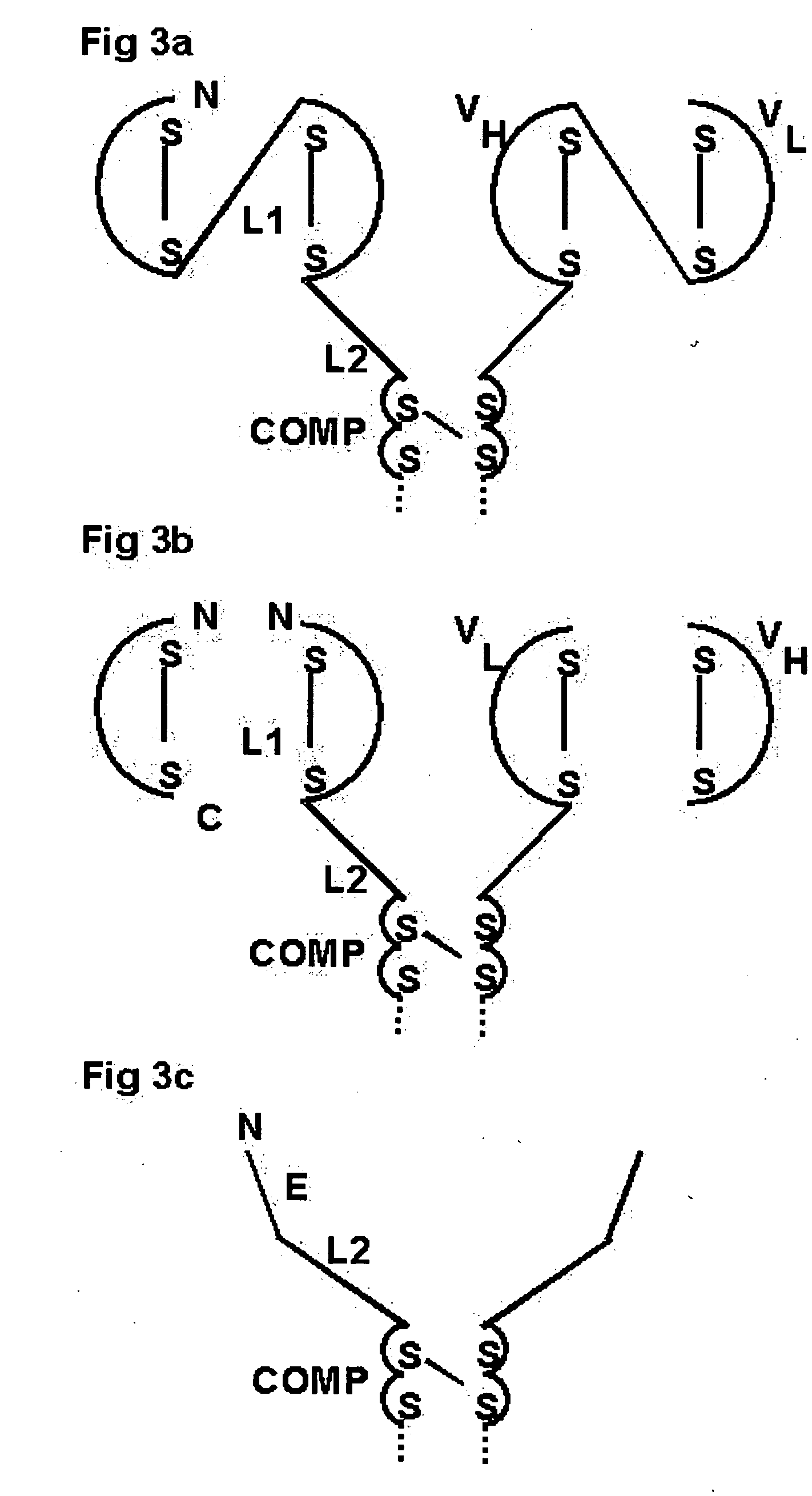Oligomeric receptor ligand pair member complexes
a technology of receptors and complexes, applied in cell receptors/antigens/surface determinants, cell receptors/surface antigens/surface determinants, carrier-bound/immobilised peptides, etc., can solve the toxicity and immunogenicity of using non-human content in the mhc-targeting complex of the prior, and the final mhc oligomer is not predicted. , to achieve the effect of preventing the toxicity o
- Summary
- Abstract
- Description
- Claims
- Application Information
AI Technical Summary
Benefits of technology
Problems solved by technology
Method used
Image
Examples
examples
[0149] In the following examples amino acid sequences are listed in single letter code.
example i
[0150] The following is a detailed example for constructing a pentameric HLA Class II MHC complex as shown in FIG. 2 wherein Class II MHC-peptide monomers provided with a PK tag are coupled to an oligomeric core via an anti-PKtag-scFv which is fused to the N-terminus of the oligomerising domain of COMP.
[0151] The pentameric Class II MHC-peptide complex comprises three independent polypeptide chain components each represented N-terminal to C-terminal: [0152] 1) Class II β chain: HLA-DRB1*0101T [0153] 2) Class II α chain-tag: HLA-DRA*0101T—linker1-(PK tag) [0154] 3) Chimeric protein: (anti-PK-scFv)-linker2-COMP-linker3-BP
[0155] Wherein [0156] In 1 above: HLA-DRB1*0101T has the natural amino acid sequence for HLA-DRB1*0101 truncated after amino acid 198 of the mature peptide
[0157] In 2 above: HLA-DRA*0101T-(PK tag) has the natural amino acid sequence for HLA-DRA1*0101 truncated after amino acid 192 of the mature peptide followed by the linker amino acid sequence LE followed by the a...
example ii
[0169] The following is a detailed example for constructing a pentameric HLA Class I MHC complex as shown in FIG. 5, which has an attachment means to bind to CD20 on the surface of B cells. Class I MHC-peptide monomers provided with a PK tag are coupled to an oligomeric core via an anti PKtag-scFv which is fused to the N-terminus of the oligomerising domain of COMP. Fused to the C-terminus of the COMP domain is an anti-CD20-scFv.
[0170] The pentameric Class I MHC-peptide complex comprises three independent polypeptide chain components each represented N-terminal to C-terminal: [0171] 1) Class I β chain: β2m-linker1-(PK tag) [0172] 2) Class I α chain: HLA-A*0201T [0173] 3) Chimeric protein: (anti-PK-scFv)-linker2-COMP-linker3-(anti-CD20-scFv;
[0174] Wherein
[0175] In 1 above: β2m is the natural amino acid sequence of human β2 microglobulin followed by the amino acid linker sequence GGGGSG [SEQ ID NO: 8] followed by the amino acid sequence of the PK tag:
GKPIPNPLLGLDST.[SEQ ID NO: 1]...
PUM
| Property | Measurement | Unit |
|---|---|---|
| Length | aaaaa | aaaaa |
| Immunogenicity | aaaaa | aaaaa |
| Affinity | aaaaa | aaaaa |
Abstract
Description
Claims
Application Information
 Login to View More
Login to View More - R&D
- Intellectual Property
- Life Sciences
- Materials
- Tech Scout
- Unparalleled Data Quality
- Higher Quality Content
- 60% Fewer Hallucinations
Browse by: Latest US Patents, China's latest patents, Technical Efficacy Thesaurus, Application Domain, Technology Topic, Popular Technical Reports.
© 2025 PatSnap. All rights reserved.Legal|Privacy policy|Modern Slavery Act Transparency Statement|Sitemap|About US| Contact US: help@patsnap.com



